Shareware is a type of proprietary software that is initially shared by the owner for trial use at little or no cost. Often the software has limited functionality or incomplete documentation until the user sends payment to the software developer. Shareware is often offered as a download from a website. Shareware differs from freeware, which is fully-featured software distributed at no cost to the user but without source code being made available; and free and open-source software, in which the source code is freely available for anyone to inspect and alter.
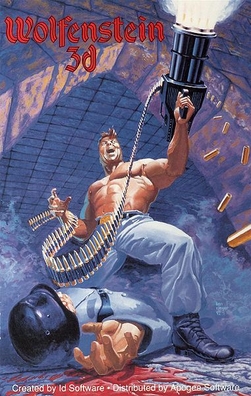
Wolfenstein 3D is a first-person shooter video game developed by id Software and published by Apogee Software and FormGen. Originally released on May 5, 1992, for DOS, it was inspired by the 1981 Muse Software video game Castle Wolfenstein, and is the third installment in the Wolfenstein series. In Wolfenstein 3D, the player assumes the role of Allied spy William "B.J." Blazkowicz during World War II as he escapes from the Nazi German prison Castle Wolfenstein and carries out a series of crucial missions against the Nazis. The player traverses each of the game's levels to find an elevator to the next level or kill a final boss, fighting Nazi soldiers, dogs, and other enemies with a knife and a variety of guns.
Commander Keen is a series of side-scrolling platform video games developed primarily by id Software. The series consists of six main episodes, a "lost" episode, and a final game; all but the final game were originally released for MS-DOS in 1990 and 1991, while the 2001 Commander Keen was released for the Game Boy Color. The series follows the eponymous Commander Keen, the secret identity of the eight-year-old genius Billy Blaze, as he defends the Earth and the galaxy from alien threats with his homemade spaceship, rayguns, and pogo stick. The first three episodes were developed by Ideas from the Deep, the precursor to id, and published by Apogee Software as the shareware title Commander Keen in Invasion of the Vorticons; the "lost" episode 3.5 Commander Keen in Keen Dreams was developed by id and published as a retail title by Softdisk; episodes four and five were released by Apogee as the shareware Commander Keen in Goodbye, Galaxy; and the simultaneously developed episode six was published in retail by FormGen as Commander Keen in Aliens Ate My Babysitter. Ten years later, a homage and sequel to the series was developed by David A. Palmer Productions and published by Activision as Commander Keen. Another game was announced in 2019 as under development by ZeniMax Online Studios, but was not released.
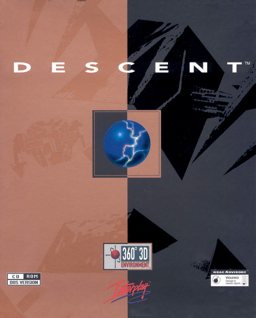
Descent is a first-person shooter (FPS) game developed by Parallax Software and released by Interplay Productions in 1995 for MS-DOS, and later for Macintosh, PlayStation, and RISC OS. It popularized a subgenre of FPS games employing six degrees of freedom and was the first FPS to feature entirely true-3D graphics. The player is cast as a mercenary hired to eliminate the threat of a mysterious extraterrestrial computer virus infecting off-world mining robots. In a series of mines throughout the Solar System, the protagonist pilots a spaceship and must locate and destroy the mine's power reactor and escape before being caught in the mine's self-destruction, defeating opposing robots along the way. Players can play online and compete in either deathmatches or cooperate to take on the robots.

Antivirus software, also known as anti-malware, is a computer program used to prevent, detect, and remove malware.

Catacomb 3-D is a first-person shooter video game, the third in the Catacomb series, the first of which to feature 3D computer graphics. It was developed by id Software and originally published by Softdisk under the Gamer's Edge label, released in November 1991. The player takes control of the high wizard Petton Everhail, descending into the catacombs of the Towne Cemetery to defeat the evil lich Nemesis and rescue his friend Grelminar.
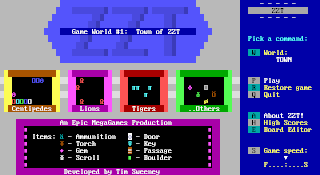
ZZT is a 1991 action-adventure puzzle video game and game creation system developed and published by Potomac Computer Systems for MS-DOS. It was later released as freeware in 1997. It is an early game allowing user-generated content using object-oriented programming. Players control a smiley face to battle various creatures and solve puzzles in different grid-based boards in a chosen world. It has four worlds where players explore different boards and interact with objects such as ammo, bombs, and scrolls to reach the end of the game. It includes an in-game editor, allowing players to develop worlds using the game's scripting language, ZZT-OOP.

Uplink is a simulation video game released in 2001 by the British company Introversion Software. The player takes charge of a freelance computer hacker in a fictional futuristic 2010, and must break into foreign computers, complete contracts and purchase new hardware to hack into increasingly harder computer systems.
Linux malware includes viruses, Trojans, worms and other types of malware that affect the Linux family of operating systems. Linux, Unix and other Unix-like computer operating systems are generally regarded as very well-protected against, but not immune to, computer viruses.

Click is a weekly BBC television programme covering technology news and recent developments in the world of technology and the Internet, presented by Spencer Kelly and Lara Lewington. It was created by then BBC presenter Stephen Cole.
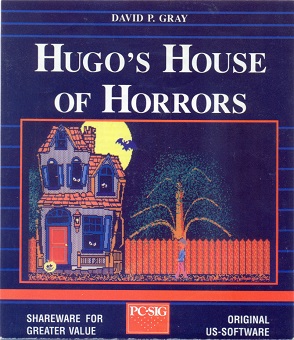
Hugo's House of Horrors is a parser-based adventure game designed by independent software developer David P. Gray and published as shareware by Gray Design Associates in 1990. The game follows the character Hugo as he searches for his girlfriend Penelope in a haunted house. The player inputs text commands to solve puzzles and progress through the house. It was inspired by Leisure Suit Larry in the Land of the Lounge Lizards, and it was followed by Hugo II, Whodunit? in 1991.
Norton AntiVirus is an anti-virus or anti-malware software product founded by Peter Norton, developed and distributed by Symantec since 1990 as part of its Norton family of computer security products. It uses signatures and heuristics to identify viruses. Other features included in it are e-mail spam filtering and phishing protection.
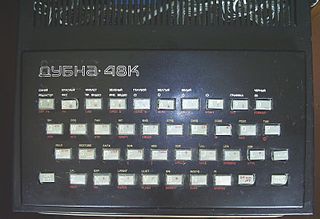
The Dubna 48K is a Soviet clone of the ZX Spectrum home computer launched in 1991. It was based on an analogue of the Zilog Z80 microprocessor. Its name comes from Dubna, a town near Moscow, where it was produced on the "TENSOR" instrument factory, and "48K" stands for 48 KBs of RAM.
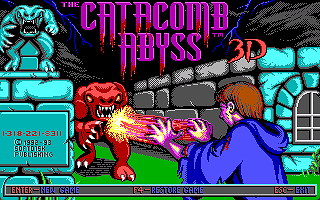
Catacomb Abyss is a fantasy themed first-person shooter (FPS) game developed by Softdisk and released in November 1992 for MS-DOS. It is the fourth entry in the Catacomb series of video games. Its predecessor, Catacomb 3-D, was developed by id Software as part of a contract with Softdisk. When the contract ended, Softdisk kept ownership of both the 3D engine as well as the intellectual property of Catacomb 3-D. The company formed a new, in-house team to develop three sequels, known as the Catacomb Adventure Series. This trilogy consists of Catacomb Abyss, Catacomb Armageddon and Catacomb Apocalypse. Softdisk published a shareware version of Catacomb Abyss, which could be freely distributed and played to encourage gamers to purchase the full trilogy.

The Storm botnet or Storm worm botnet was a remotely controlled network of "zombie" computers that had been linked by the Storm Worm, a Trojan horse spread through e-mail spam. At its height in September 2007, the Storm botnet was running on anywhere from 1 million to 50 million computer systems, and accounted for 8% of all malware on Microsoft Windows computers. It was first identified around January 2007, having been distributed by email with subjects such as "230 dead as storm batters Europe," giving it its well-known name. The botnet began to decline in late 2007, and by mid-2008 had been reduced to infecting about 85,000 computers, far less than it had infected a year earlier.
Mac Defender is an internet rogue security program that targets computers running macOS. The Mac security firm Intego discovered the fake antivirus software on 2 May 2011, with a patch not being provided by Apple until 31 May. The software has been described as the first major malware threat to the Macintosh platform. However, it is not the first Mac-specific Trojan, and is not self-propagating.
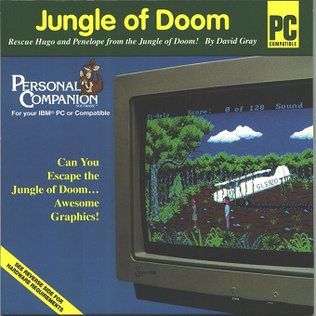
Hugo III, Jungle of Doom! is a parser-based adventure game designed by independent software developer David P. Gray and published as shareware by Gray Design Associates in 1992.
BadBIOS is alleged malware described by network security researcher Dragos Ruiu in October 2013 with the ability to communicate between instances of itself across air gaps using ultrasonic communication between a computer's speakers and microphone. To date, there have been no proven occurrences of this malware.

Commander Keen in Invasion of the Vorticons is a three-part episodic side-scrolling platform video game developed by Ideas from the Deep and published by Apogee Software in 1990 for MS-DOS. It is the first set of episodes of the Commander Keen series. The game follows the titular Commander Keen, an eight-year-old child genius, as he retrieves the stolen parts of his spaceship from the cities of Mars, prevents a recently arrived alien mothership from destroying landmarks on Earth, and hunts down the leader of the aliens, the Grand Intellect, on the alien home planet. The three episodes feature Keen running, jumping, and shooting through various levels while opposed by aliens, robots, and other hazards.













